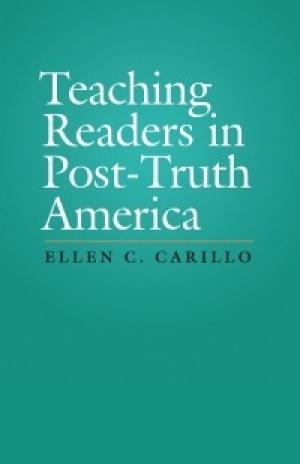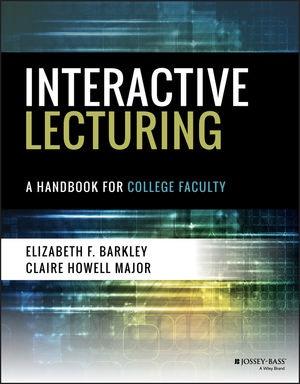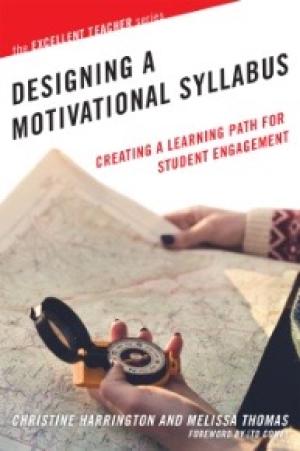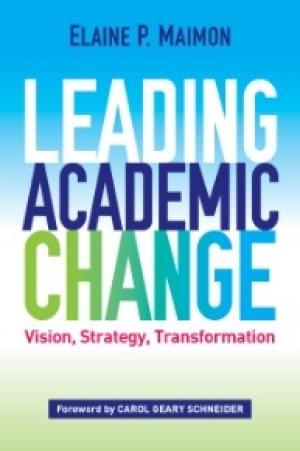Resources by Joanne Maguire

Many teachers have had cause in the last few years to ponder questions around teaching in a “post-truth” culture. How do reading, writing, and thinking change in a world in which groups cannot or will not agree on essential facts and rules of evidence? How can we teach meaningful reading in an overwhelmingly information-rich landscape? How can we heal the divisiveness that pervades so much of our culture, and how can we help students discern true from false? This book is written primarily for instructors in first-year college writing courses, but much of it will prove useful to frustrated teachers in any discipline. It does not give many specific recommendations for classroom strategies, but it does set out thoughtful ideas about how to think about teaching reading. The book begins with a chapter on “theoretical first principles.” Chapter 2 considers the ways in which standardized tests (and teachers in turn) encourage an unthinking reverence for text by dismissing the role of the reader. Carillo provides convincing evidence of negative outcomes from this approach. These two chapters set the stage for an argument in Chapter 3 about reading and writing as embodied, affective acts, as this writer is firmly against the devaluing of emotion and engagement so common in a world that prizes objectivity. In Chapter 4, Carillo argues that modeling and imitation have been given short shrift in reading instruction. She gives several useful tips for developing imitative exercises that help students see good reading and writing practices, and she especially trumpets the power of annotation, illustrated with a case study from her own teaching. The problems highlighted in Chapter 5, specifically targeting writing and composition instruction, are common to other fields as well: focus on reason over emotion; focus on traditional essay forms; and lack of focus on psychological studies that can enhance both teaching and learning. This book’s title promises more than it delivers, although it delivers a lot. Carillo’s insistence on redirecting students away from claims and argumentation and “toward stylistic elements that contribute to a text’s meaning” (41) will strike many teachers trained in other modes as difficult to attain. “Reading for argument” is, for Carillo, a problem: students only read for a relatively simplistic argument and miss so much that could make them stronger readers, such as inquiring about the how and why, not just the what. Yet many teachers find that students can’t even read for argument, a fact this book glosses over. That said, a call to encouraging more affective and empathetic reading is timely and needed. The use of Peter Elbow’s doubting and believing game (47-50) will be familiar to many in religious studies, as will the call to look outside one’s own discipline for expertise. This book helps teachers think about ways to mitigate aspects of culture that revere text and steer students “away from the language of negotiation and compromise” (114).

Barkley and Major have compiled an invaluable compendium of information about improving on traditional class lectures by including interactive elements. Like McKeachie’s Teaching Tips or Davis’ Tools for Teaching, this book can be read cover to cover or approached as a resource to consult when needed, as just about every page includes some practical suggestions for improving teaching and student engagement. The book opens with a two-chapter consideration of what the authors call a “Conceptual Framework for Interactive Learning.” These chapters examine the benefits and drawbacks of lectures and active learning strategies as well as the wide variety of each, arguing ultimately for an integrative model that takes advantage of the best of both approaches. The suggestions in these chapters and throughout the book are based on recent research rather than recourse to traditional arguments about the superiority of one modality over another. The ultimate strengths of this book, beyond the sheer volume of useful information, are its thoughtful mix of approaches and avoidance of a one-size-fits-all approach, all presented in concrete, actionable terms. This handbook is divided into three parts: the conceptual opening, twelve chapters on Engaging Presentation Tips, and eight chapters on Active Learning Techniques. The second two parts include 53 tips for creating engaging presentations and 32 suggestions for active learning techniques, most illustrated through specific examples. These are previewed at the beginning of each relevant chapter in a simple chart that directs reader attention to what each tip aims to improve and directions for implementing changes. Although it is impossible to itemize those tips here, it is indicative of the scope of the handbook’s broad coverage that the index includes subjects as diverse as voice modulation, metacognitive reflection, “dead wood words,” and background color of slides. Overall, Barkley and Major suggest many simple changes to the typical lecture that can result in more student engagement, such as how to devise a “power close” to any lecture; how to structure and practice presentations with, for instance, a “weatherperson” approach; and how to guide students in taking “sketch notes” during lectures. From “Guess and Confirm” to “Translate That!” to sticky note diagrams, these authors provide a wealth of possibilities to teachers and their students for making lectures interactive and engaging. The approaches in this book are meant to work across disciplines and teaching platforms, including online and hybrid modalities. It is not geared to beginning or veteran teachers but rather to any teacher who wants to improve the classroom experience for students and for themselves. The advice here is rich, practical, and based on research, experience, and common sense. This book seems ideal for individual use but also for any departmental faculty resource collection.

This book helps teachers think through the many functions and possibilities of the course syllabus, particularly as seen through the eyes of students. The authors advise thinking of the syllabus as a motivational tool rather than a punishing list of policies or a repository for contractual language; moreover, they suggest embedding more visual tools and images as well as more explicit rationales for assignments, even down to the individual class level. All of what they propose seems simple and reasonable, even for busy faculty. The authors clearly aim to help faculty see the excitement of creating “a course design tool that maps out the learning path for students” (19), and their suggestions will prove most useful to those beginning teaching who want to break out of the graduate school reading list mode and to those further on in careers, particularly those who might have changed (or want to change) their teaching strategies. Harrington and Thomas write in an accessible and encouraging style throughout. After a brief consideration of the history and purpose of the syllabus in Chapter 1, they address the following issues in turn: applying course design principles with an emphasis on backward design; key components of any syllabus; policies and other boilerplate; issues of design; techniques for getting feedback and evaluating the syllabus; and ways of using the syllabus beyond its traditional roles. They helpfully include a sample syllabus as well as a syllabus checklist and sample grading rubrics. They lay out the main types of syllabi (coverage-based and activity-based) and argue for the superiority of a backward design that works from goals for students rather than from content or activities. They also champion Fink’s taxonomy of significant learning over Bloom’s, a distinction without a difference to readers who steer clear of learning taxonomies. Many of the suggestions here seem more suited to a quick tutorial than a full-length book, particularly for seasoned faculty. But the biggest surprise is that this book scarcely addresses online learning management systems, an essential part of many courses that has, in some cases, completely replaced the single-document syllabus. Omitting this technology leaves a huge gap. This book would be greatly improved with a consideration of how the purpose and form of the syllabus has changed with the rise of learning management systems and how the principles described here apply to syllabus design in that context. Harrington and Thomas rightly see the syllabus as a document that communicates expectations while explaining why the work of the course matters. Much of their focus is on tone and balance: even subtle changes in language and a careful curation of policies, such as those related to student behavior in class, can pay dividends in making students feel more positive and motivated to take on the work of the course. Although this book is not specific in any way to religious studies or theology, any teacher can benefit from a reminder of ways to improve this most standard of course materials.

College students were far more uniform in age, race, and socio-economic background a few decades ago than they are now, yet colleges and universities have often failed to design programs of study that work for these students. Leading Academic Change outlines the steps to take toward change on behalf of the new majority students, the non-white, low-income, working, second language, or adult learners who often find themselves in very unfamiliar territory in college classrooms. These “first generation exclamation point” students (xiv) most often encounter ineffective and even counterproductive general education and distribution sequences, and many are transfer students from community colleges, whose curricula are at odds with those at 4-year institutions. This book proposes workable solutions to multiple missed connections. This book is less for classroom teachers than for administrators interested in meaningful structural change. Maimon relies primarily on data from years of innovation in Writing Across the Curriculum programs as well as on her own considerable administrative experiences. The central case study is Governors State University, which has successfully implemented high impact practices and a more integrated, student-centered curriculum with low administrative bloat. Drawing on the work of Judy B. Rosener, Maimon draws a clear distinction between traditional “transactional” leaders and “transformative” leaders (5). Transformative leadership brings everyone to the table and works collaboratively to achieve shared goals. Maimon aims at collaborative transformation with student success at the core. Maimon provides many concrete, multi-faceted suggestions here. In brief, the institutional transformations she supports rely on a close interaction of students and faculty, who are in this venture together. She insists on several key components to transforming institutions: a commitment to keeping funding closer to students than to administrative offices; close cooperation between student affairs personnel and classroom faculty; a willingness to take advantage of high tech while maintaining “high touch” with students; an ability to see students as people in development, who need feedback through assessing for strength, not deficit; and a willingness to allow students’ lives to enter the classroom and to inform – rather than be at odds with – the curriculum. Despite its emphasis on institutional change, this book does get down to the classroom level in several ways, particularly in emphasizing the importance of respecting students for who they are and what they know. That respect and recognition of prior knowledge can help teachers and academic leaders to scaffold a curriculum of knowledge and skills that makes sense for all concerned. Maimon also calls teachers to humility rather than judgment. She decries the endemic “Maimon Hierarchical Fallacy” which holds that some teachers in some disciplines are “smarter” than others based on how abstract their work appears to be or the level of the students they teach (57). This damages students as well as teachers and can starve introductory courses and students of the best teachers. This book is, above all, a call to give all students our very best, both in our classrooms and at our institutions. It is also a well-timed reminder that change is inevitable and that equity can be a means to achieving educational quality.